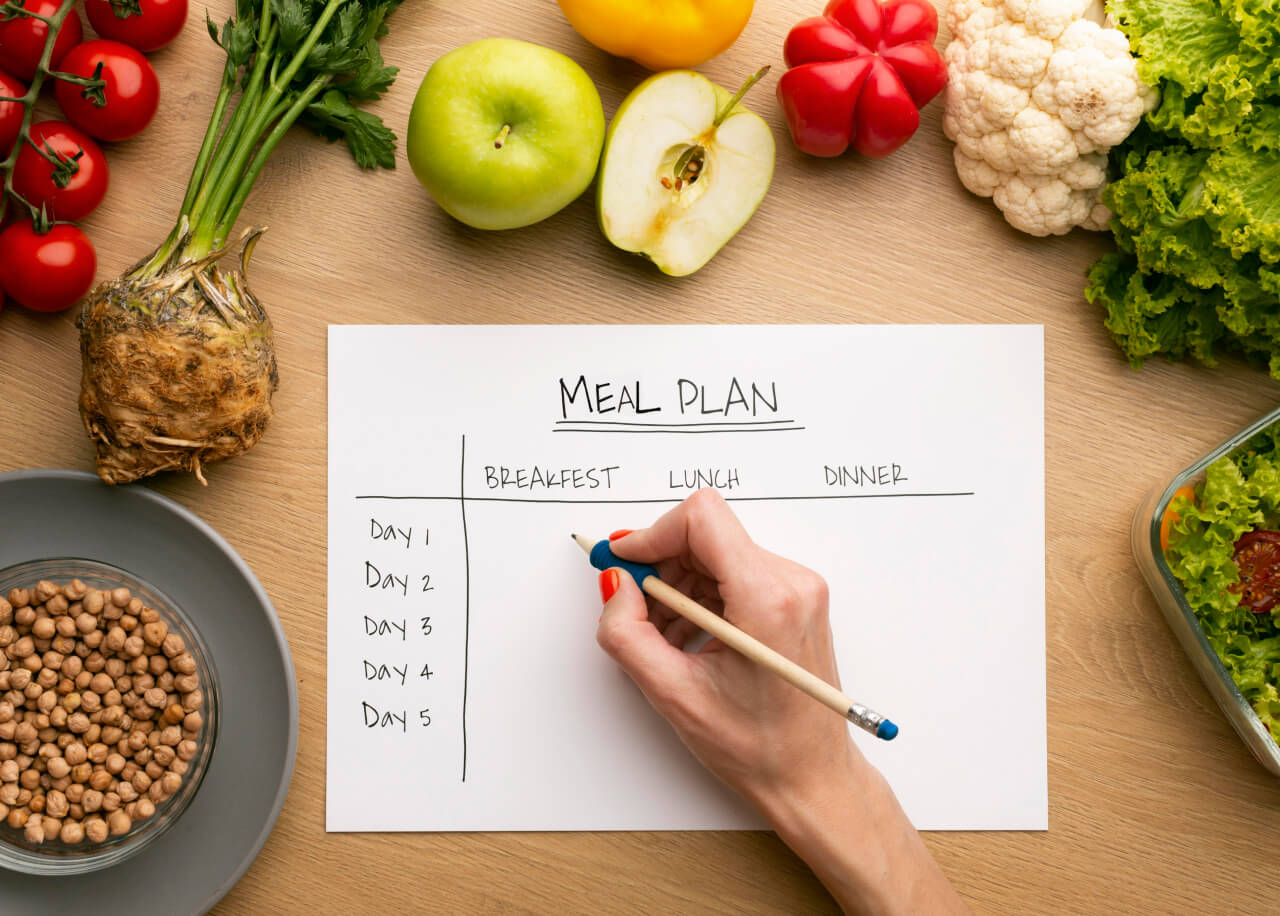Creating Nutrition Goals: A Comprehensive Guide to Success

Setting nutrition goals is fundamental for improving health, managing weight, enhancing performance, or addressing specific health concerns. Effective goals provide structure and accountability, helping you make informed choices that align with your values and needs. This guide dives deep into the process, strategies, and psychology of creating sustainable nutrition goals.
Why Nutrition Goals Matter
Nutrition goals serve multiple purposes that extend beyond simple dietary changes:
- They Provide Clear Direction
Without goals, it’s easy to feel overwhelmed by the abundance of nutrition advice. Clear objectives help you focus on what truly matters for your health.
- They Boost Motivation
When you know why you’re making certain dietary changes, it’s easier to stay committed, even when obstacles arise.
- They Allow for Measurable Progress
Tracking progress gives you tangible proof of your efforts and helps you stay on course.
- They Address Unique Needs
Everyone’s nutritional requirements are different. Goals tailored to your lifestyle, preferences, and health conditions ensure relevance and effectiveness.
The Science of Goal-Setting: Using the SMART Framework
To create effective nutrition goals, apply the SMART framework:
Specific
Define your goals with clarity and detail.
- Example: Replace “I want to eat better” with “I want to eat five servings of vegetables daily.”
Measurable
Include quantifiable metrics to track progress.
- Example: “I will drink eight glasses of water daily.”
Achievable
Set realistic expectations based on your current habits and resources.
- Example: Start by reducing sugary drinks three days per week if quitting entirely feels daunting.
Relevant
Ensure your goals align with broader health or lifestyle priorities.
- Example: If your goal is to manage diabetes, focus on carbohydrate consistency.
Time-Bound
Set a deadline to create urgency and keep you motivated.
- Example: “I want to lower my cholesterol by 20 points in six months.”
Understanding Your Starting Point
Before setting goals, evaluate where you are now. This assessment provides a foundation for realistic and personalized objectives.
- Keep a Food Diary
Track everything you eat and drink for a week. Note portion sizes, meal timing, and emotions associated with eating.
- Assess Nutrient Gaps
Use online tools or consult a dietitian to analyze your intake of essential nutrients like fiber, protein, vitamins, and minerals.
- Evaluate Lifestyle Factors
Consider sleep patterns, stress levels, and physical activity, as these influence nutritional needs and habits.
- Check Health Markers
If possible, get lab work done to understand key indicators such as blood sugar, cholesterol, and vitamin levels. This data can help prioritize goals.
Types of Nutrition Goals
Nutrition goals vary widely depending on individual aspirations and needs. Below are examples tailored to common categories:
- Weight Management Goals
- Weight Loss: Focus on a sustainable calorie deficit through portion control, increased activity, and nutrient-dense foods.
- Goal Example: “Reduce daily caloric intake by 500 calories to lose 1 pound per week.”
- Weight Gain: Aim for a calorie surplus from nutrient-rich sources like lean proteins, whole grains, and healthy fats.
- Goal Example: “Add a 300-calorie protein shake as an afternoon snack.”
- Athletic Performance Goals
- Enhance energy levels, endurance, and recovery.
- Goal Example: “Consume a 3:1 carbohydrate-to-protein ratio within 30 minutes post-workout.”
- Managing Health Conditions
- Tailor goals to support specific conditions like diabetes, hypertension, or digestive disorders.
- Goal Example for Diabetes: “Include at least 10 grams of fiber in each meal to stabilize blood sugar.”
- Goal Example for Hypertension: “Reduce sodium intake to less than 2,300 mg daily.”
- Habit-Based Goals
- Focus on behaviors rather than outcomes.
- Goal Example: “Prepare three home-cooked meals per week.”
Creating a Personalized Nutrition Plan
A personalized nutrition plan ensures that your goals are relevant, achievable, and aligned with your unique lifestyle.
Step 1: Define Your Long-Term Vision
Ask yourself:
- What do I want to achieve in six months? A year? Five years?
- How will improved nutrition impact my life?
Step 2: Break the Vision Into Smaller Steps
Smaller, short-term goals make the process less overwhelming.
- Example: If your long-term goal is to lose 20 pounds in a year, aim for 1-2 pounds per month.
Step 3: Plan for Obstacles
Identify potential challenges and brainstorm solutions.
- Challenge: Limited time to cook.
- Solution: Batch cook meals on Sundays or use pre-prepped grocery options.
Step 4: Monitor Progress Regularly
Track your progress using apps, journals, or wearables. Adjust goals based on what’s working or what isn’t.
Specific Nutrition Strategies for Common Goals
- Improving General Wellness
- Prioritize nutrient diversity: “Eat at least five different-colored fruits and vegetables daily.”
- Stay hydrated: “Drink half your body weight in ounces of water daily.”
- Managing Stress and Mood
- Incorporate omega-3 fatty acids to reduce inflammation and support brain health: “Eat fatty fish twice weekly.”
- Stabilize blood sugar to prevent mood swings: “Avoid skipping meals and include a protein source at every meal.”
- Reducing Food Waste While Eating Healthier
- Plan meals around what’s already in your pantry or fridge.
- Aim for goals like: “Repurpose leftovers into new meals twice a week.”
The Role of Mindset in Achieving Nutrition Goals
Achieving nutrition goals isn’t just about physical effort—it requires a resilient mindset.
- Build Positive Associations
Frame goals positively:
- Instead of “Stop eating junk food,” say, “Incorporate two healthy snacks daily.”
- Practice Mindful Eating
Pay attention to hunger and fullness cues to avoid overeating.
- Goal Example: “Take 20 minutes to eat each meal and chew thoroughly.”
- Celebrate Successes
Acknowledge milestones, no matter how small. Reward yourself with non-food-related treats like a relaxing bath or a new book.
Sustainability: The Key to Long-Term Success
- Avoid Extreme Diets
Diets that severely restrict calories or entire food groups are rarely sustainable. Focus on balanced, enjoyable meals.
- Periodically Reevaluate Goals
Life circumstances change, and so should your goals.
- Example: Adjust caloric needs if transitioning from a sedentary job to a physically active one.
- Build a Support System
Surround yourself with people who encourage your journey, whether it’s family, friends, or a dietitian.
Conclusion
Creating effective nutrition goals is both an art and a science. By understanding your baseline, using the SMART framework, and tailoring goals to your individual needs, you can set yourself up for sustainable success. Remember, progress is more important than perfection, and every small step you take brings you closer to a healthier, more vibrant life.
“At Dynamic Wellness Solutions, we believe in empowering you with the knowledge and tools to make informed choices that resonate with your unique well-being journey. Our commitment to transparency ensures that you navigate the intricate world of nutrition with clarity, embracing the transformative power of honest and truthful information. Join us on this dynamic path to wellness, where your health and vitality are at the heart of every decision we make together.”


